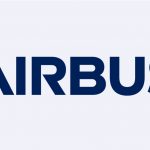UK Startup Develops “an eVTOL Bus”
By Chris Stonor
Bristol-based UK startup, Sora Aviation, is developing an eVTOL bus with zero emissions, low noise and affordable ticket prices for the Advanced Air Mobility (AAM) market, writes wearefinn.com, who recently interviewed company co-Founder and CEO, Furqan.
Furqan served as the Technical Authority on AAM at GKN and has led multiple electric, hybrid and hydrogen aircraft development programs from conceptual design to flight testing. A Fellow of the IMechE, he chairs the ADS Advanced Air Mobility group in the UK.
He works alongside company CTO, Malcolm Foster, who has over 40 years of experience in aircraft design at Piper, Bell, AgustaWestland, GKN and the ATI as well as on the Eviation Alice. Foster holds a lifetime achievement award from the Vertical Flight Society.
The name Sora (空) is Japanese for Sky.
Where did the concept for an eVTOL bus come from?
Five years ago we had the idea for an eVTOL bus when we were at GKN. Several OEMs were designing eVTOLs, Uber elevate had just popularised the idea of air taxis, and we were looking into that market for GKN. We realised most of the market data showed significant opportunity in airport shuttles going from downtown to the airport, and airport to downtown in a city.
We looked at that market and we thought, if you’re going to go from downtown to the airport, why would you do it four people at a time, those routes are really dense in terms of demand.
Do you foresee strong demand?
They’re really good use cases. Nobody wants to drive to the airport, where parking is often limited as well as prohibitively expensive and willingness to pay is higher due to time sensitivity. So they’re really good AAM routes. Yet, from a passenger scalability point of view, four passengers didn’t really make sense to us for those routes. Around the same time, there were a lot of questions about the costs of urban air mobility, so we started looking at ways to get expenditure down and one of the best ways is to carry more people, because you split the cost of the trip over a greater number of passengers.
There are several eVTOL concepts out there, but they’re generally one to six passenger aircraft. The S‑1 is the only credible eVTOL bus approach out there that’s being commercially pursued, and that’s one thing that led us to take a step forward with the support of our investors. We think entry into service for an aircraft like this will be around 2031.
How are you managing the infrastructure challenges that come with a larger eVTOL?
A typical 5 seat air taxi today might have a maximum dimension of 15 to 16 metres, that’s consistent with a small to medium helicopter. The 30-seater we’re developing has a maximum dimension of about 22 metres, so it is bigger, but it’s not ridiculously bigger for the number of passengers it carries. One of our goals now is to engage with infrastructure developers and make them aware that these kinds of vehicles are on the way with very favourable economics and therefore their requirements should be considered during vertiport design.
Why haven’t other eVTOL developers launched a ‘bus’ before now?
Uber were really the driving force behind making people realise that a potential market existed around advanced air mobility. Their entire operational focus was around four to five seat ground vehicles and that translated to their eVTOL studies. Most early developers were working with Uber, and Uber made it clear they were interested in five seaters.The company has since sold the Elevate business.
The second bit is a misconception that a larger electric aircraft needs magically better batteries. It requires better batteries if you want to go a significantly longer range, but if you’re only trying to go the same range as a small electric aircraft, and do the same missions, you can do that on existing ones. If you can go 100 miles in a five seat eVTOL, you can go 100 miles in a 30-seat eVTOL, you just carry a proportional amount of batteries.
We do believe that a number of small eVTOL companies will eventually want to transition to a larger aircraft, but doing it at a small scale and getting to market first for them is a priority, and if you want to do that then a smaller aircraft is just quicker and cheaper.
How does the certification pathway look?
EASA’s certification requirements for eVTOLs are already consistent with commercial transport aircraft safety targets. From a precedent point of view, larger certified rotorcraft than the S‑1 fly around the world today.
One advantage we will have is that a number of the air taxi companies will have certified years before us, and that’ll really help inform a lot of our development and certification work. We won’t have to push the pioneering of all of these regulations. They will be in place and be well established by the time we’re targeting certification.
For more information
https://www.soraaviation.com/about
(News Source: https://www.wearefinn.com/)




